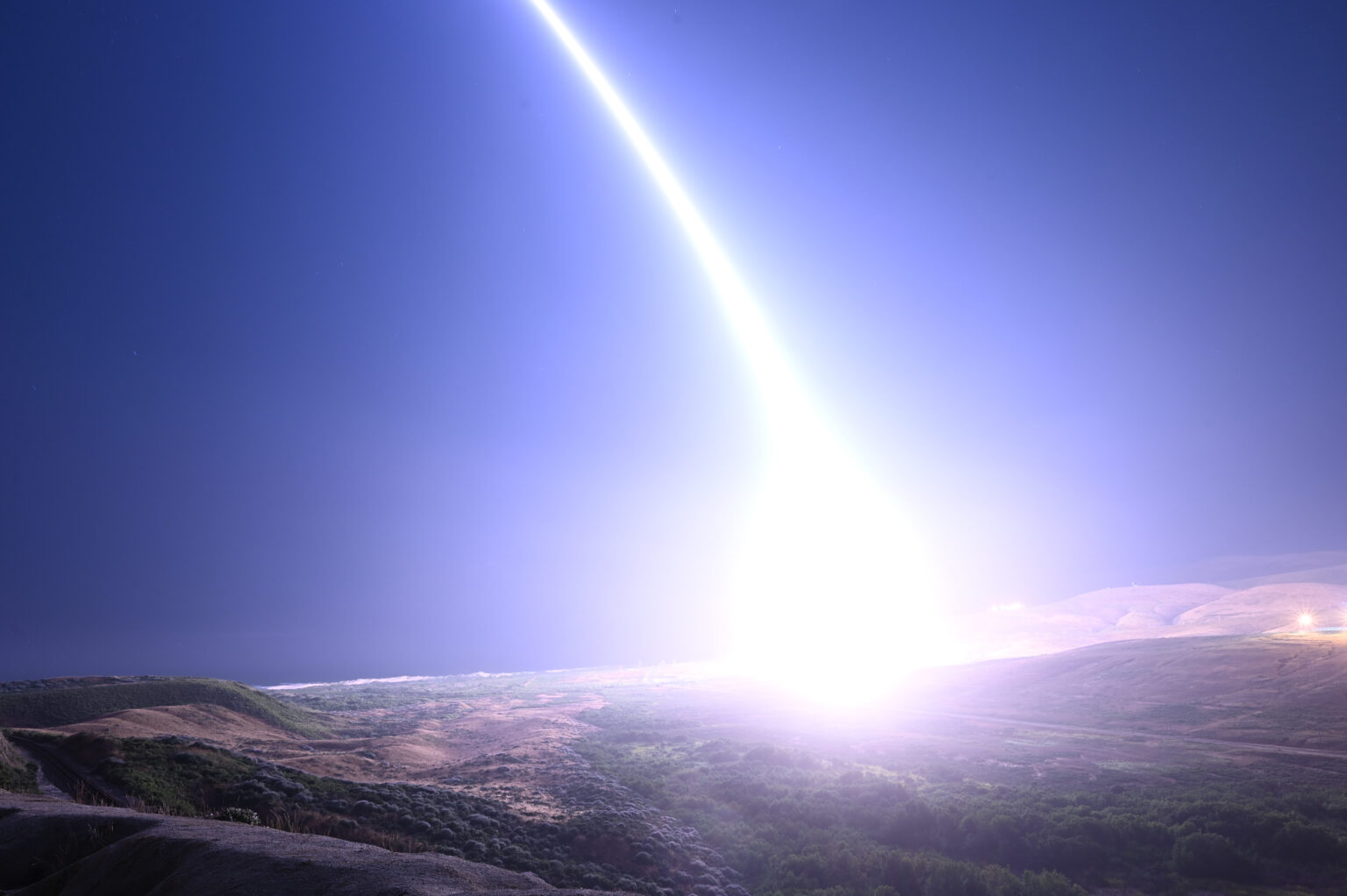In the early hours of June 4, 2024, a joint team comprising Air Force Global Strike Command (AFGSC) Airmen and Space Force Guardians successfully launched an unarmed Minuteman III intercontinental ballistic missile (ICBM) from Vandenberg Space Force Base in California. This launch, occurring at precisely 12:56 a.m. Pacific Time, is part of a series of routine tests designed to validate the United States’ nuclear deterrent capabilities. These tests, which have been conducted over 300 times before, aim to demonstrate the safety, security, reliability, and effectiveness of the nation’s ICBM force.
The Minuteman III, equipped with a single re-entry vehicle, traveled approximately 4,200 miles to reach its designated target at the U.S. Army Space and Missile Defense Command’s Ronald Reagan Ballistic Missile Defense Test Site on the Kwajalein Atoll in the Republic of the Marshall Islands. This extensive journey across the Pacific Ocean underscores the missile’s range and operational capability. During its flight, various RTS sensors, including high-fidelity metric and signature radars, optical sensors, and telemetry systems, collected crucial data to support the research, development, test, and evaluation of America’s defense and space programs.
“RTS brings a range of sensors with decades of experience in collecting and analyzing truth data to support range customers,” said Col. Juan R. Santiago, director of the Ronald Reagan Ballistic Missile Defense Test Site. This statement highlights the importance of the RTS team’s role in ensuring accurate data collection and analysis during these tests.
AFGSC Commander Gen. Thomas A. Bussiere emphasized the critical nature of the nuclear mission, stating, “Our Strikers and our nuclear mission are the bedrock of our nation’s defense and international security. As part of that mission, our ICBM force provides 24/7 strategic deterrence and stand ready to respond at a moment’s notice as the most responsive leg of the nuclear triad, and our test launches demonstrate and confirm our readiness to deliver a safe, secure, effective and credible global combat capability.”
The Minuteman III missile system, operational since the 1970s, remains a cornerstone of the U.S. strategic nuclear deterrent. Currently, there are 400 Minuteman III missiles stationed at various Air Force bases across the country, including F.E. Warren AFB in Wyoming, where the 90th Missile Wing provided maintenance support for this test. The missile bases within AFGSC maintain round-the-clock alert forces, ensuring constant readiness.
Col. Chris Cruise, commander of the 377th Test and Evaluation Group, reiterated the significance of these tests: “The U.S. nuclear enterprise is the cornerstone of security for our allies and partners around the globe. Today’s test launch is just one example of how our nation’s ICBMs, and the professional Airmen who maintain and operate them, demonstrate the readiness and reliability of the weapon system. It showcases our commitment to deterrence as we stand on continuous alert, 24/7/365.”
The test launch program involves extensive preparation, collaboration, and coordination among various government partners, including the Department of Defense, the Department of Energy, and U.S. Strategic Command. The data collected from these launches are instrumental for ongoing force development evaluation, ensuring that the United States maintains a robust and credible nuclear deterrent.
The Minuteman III missile is set to be replaced by the LG-35A Sentinel, with initial operational capability expected by 2029. Until the mid-2030s, when full capability is anticipated, the Air Force remains committed to ensuring the Minuteman III remains a viable deterrent. This transition period highlights the strategic foresight in maintaining and upgrading the nation’s ICBM capabilities.
Col. Bryan Titus, vice commander of the Space Launch Delta 30 military unit, commented on the broader significance of these tests: “These tests hold immense significance, not only for our nation’s defense but also serve as a pivotal moment in showcasing the exceptional capabilities and expertise of our dedicated team.” This perspective underscores the ongoing commitment to excellence and readiness within the U.S. military’s strategic forces.
In summary, the routine test launch of the Minuteman III ICBM serves as a critical measure to ensure the United States’ nuclear deterrence remains effective and reliable. Through rigorous testing and data analysis, the AFGSC and its partners continue to demonstrate the nation’s preparedness to address 21st-century threats and uphold international security commitments.

1 Comment
Pingback: US Considers Expanding its Nuclear Arsenal Once More - INPAC Times